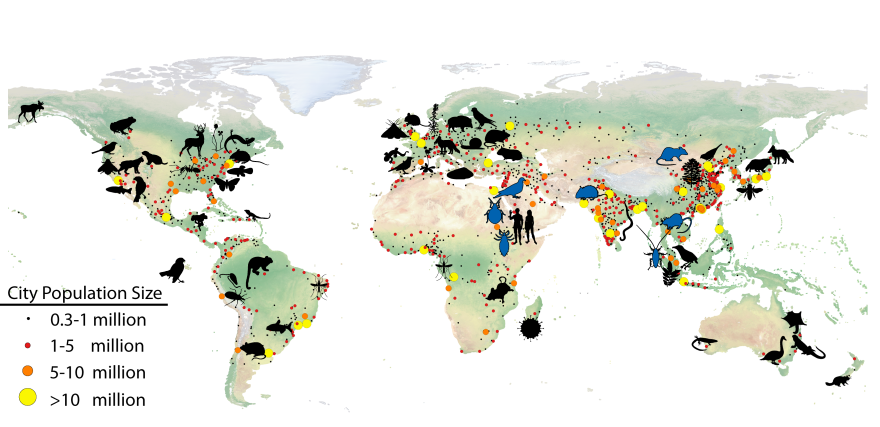Cities are creating new ecosystems, and they’re changing the way some creatures evolve. Those are the findings of a new paperin the journal Science.
Jason Munshi-South is an author of the paper and an associate professor of biological sciences at Fordham University. He and his co-author, Marc Johnson, reviewed more than 190 studies that have documented how cities drive evolution of mammals, plants, birds and insects.
“We found there’s actually now an overwhelming surge of evidence just in the last five to 10 years that a myriad of species are evolving in cities,” he says.
Munshi-South says a number of factors are driving this.
“Perhaps one of the most obvious and distinct factors that can be measured is the built environment. So you have a number of species that now are kind of trapped in little islands within cities, in places like city parks or other green spaces, and they may just differentiate from one another over time,” he explains.
He says species can accrue differences over generations, and some native species have adapted to live successfully in cities.
“One of my favorite examples is work by Kristin Winchell, who’s a graduate student at the University of Massachusetts-Boston, and she’s found that several populations of lizards in Puerto Rico have shown heritable changes in their limbs that allow them to better survive when they’re living in built environments, like crawling around on walls and fence posts and things like that, instead of on natural vegetation, like trees and bushes,” he says.
Eating from the same table
But pests and diseases have also rapidly adapted to city life. Munshi-South says pests have undergone at least two major waves of evolution.
"The first wave would’ve been early on, when humans began settling in dense, agricultural villages and towns. That’s when you saw the evolution of a lot of these commensal pests... that literally means ‘eating from the same table,’” he says.
These animals evolved to subsist on food provided by people: stealing leftover grain, or food inside people's houses.
He says in the last several decades, we've seen a second wave of evolution of these pests living in cities, for example, as species become resistant to pesticides.
“They also show interesting genetic structure depending on how humans move them around from city to city. You can trace their history of movement around the world using genetic analyses that show serial evolution as they went from one city to another,” he explains.
And he says you can see those changes even within a city – with pests like bedbugs and cockroaches.
“You can see very different populations even in buildings that are next to one another, because the original infestation came from different places, sometimes even from different cities in other countries,” he says.
Munshi-South says it's hard to know what the implications of all these changes are.
“We’re not guiding the process, this is basically happening with us ignorant of the process until we start doing the studies. So many of these examples we’ve documented are just species finding a way to survive and thrive in urban environments," he says.
"Another thing that makes this difficult to predict is that you have a number of species that occur in cities that don’t occur together other places in nature. So cities can be very unique ecosystems with many new interactions between species. And so that will create, basically, new ecology that will feed back onto the evolution of these populations.”
He says one thing we can do to help native species in cities is design connections between green spaces, so creatures don't become isolated in little pockets.






